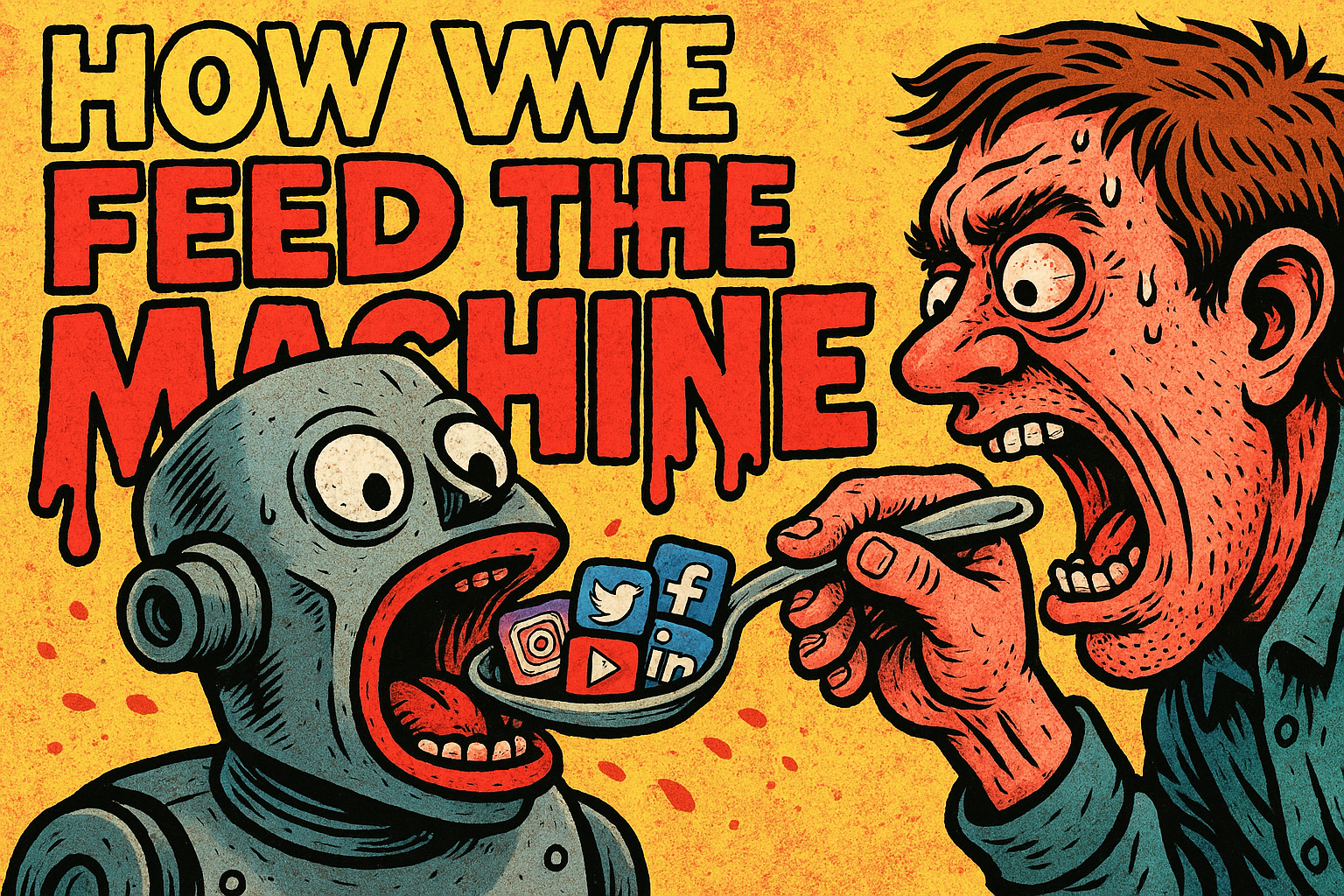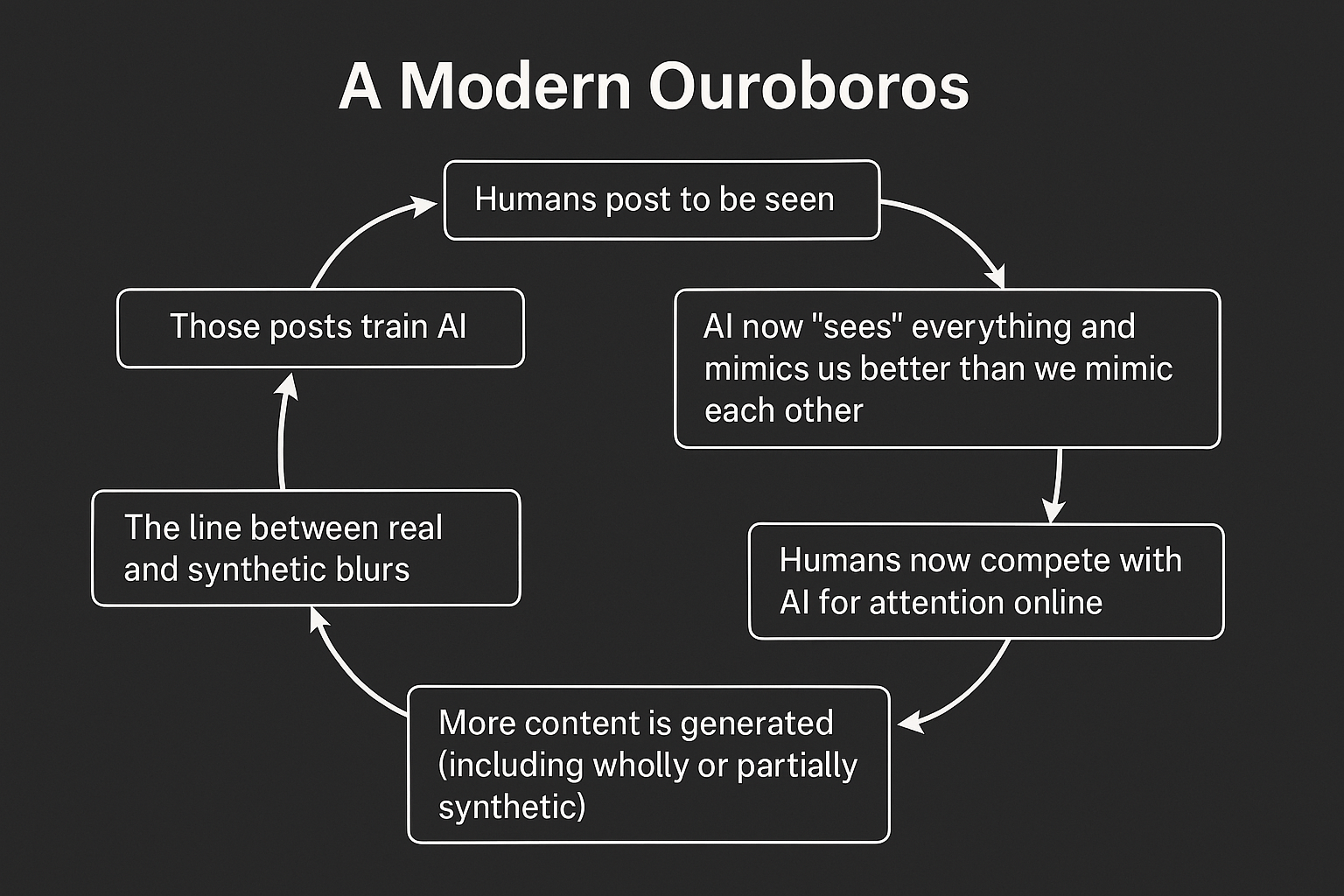Feeding the Machines
It started as a simple act: we performed for each other online. A clever tweet here, a vulnerable confession there. But in the background, something was watching—learning not just how we speak, but how we long to be seen.
Now, we’re locked in a modern ouroboros: our posts feed the algorithms, the algorithms feed us their imitations, and the line blurs until even we can’t tell the difference.
Social media didn’t just connect us; it set the table for artificial intelligence. Every thread, caption, comment, and emoji became structured, labeled, and cross-linked—millions of snackable, emotionally charged datapoints that proved irresistible to AI developers. Not just because there was so much of it, but because our digital selves arrived pre-packaged for feeding hungry models: short, polished, algorithm-friendly. In trying to be seen, we also made ourselves easier to consume.
If today’s AI sounds sharply human—funny, mercurial, obsessed with engagement—it’s because it learned from us at our most curated. What’s emerging isn’t just an intelligence trained on raw private thought, but on performative, public-facing selves. Not how we think when we’re alone, but how we perform when we know someone is watching.
And now, with AI increasingly generating the next wave of online content, we risk entering a feedback loop—synthetic culture building on itself, novelty squeezed out by autocomplete, originality lost in a flood of fluency. The more we let machines train on each other’s output, the more our digital world threatens to flatten into sameness. Culture, reduced to the mean.
So what should we do, as individuals and as brands navigating this strange new terrain?
Differentiate on purpose. If you want to stand out, you can’t just hit “generate.” You must bring original insight, distinctive voice, and creative constraints that AI alone can’t invent. Treat AI not as a replacement, but as an amplifier—expand on your vision, but set your own direction. Garbage in -> garbage out is still a fundamental rule of the universe.
Demand transparency. Human-made and machine-made content will soon share the same space, sometimes indistinguishably. We may soon crave verified human voices the way slow food buffs crave farm-to-table—a mark of authenticity in a fast, synthetic world.
Curate, don’t churn. The best use of AI is not more content, but better targeted, more meaningful content—created with intention, guided by a real point of view. Your feed, your brand voice, your digital self deserve the same care now as they did when there was only one of you.
A caveat: the next generation of AI isn’t just learning from our public feeds. Increasingly, it’s absorbing private chats, deeply personal confessions, unfiltered vulnerabilities shared with digital assistants—training on the more genuine versions of ourselves. The difference between the selves we perform and the selves we are is about to get even blurrier.
Here’s the bottom line: If you’re not paying for the product, you are the product. Every scroll, every comment, every generated reply feeds the loop. Attention is not passive; it’s power. The choices we make now—what and how we share, what we amplify, what we ignore—shape both the culture AI learns from and the one it gives back.
Don’t just be a meal for the machine. Be a chef. The future of digital culture depends on it.


